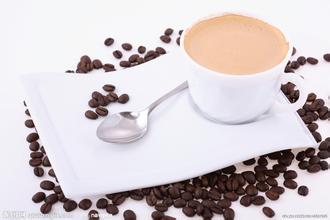Introduction to the flavor and taste of Panamanian Coffee Manor characteristics of Panamanian Coffee
Panama has a world-famous boutique coffee estate, needless to say the Emerald Manor (La Esmeralda) in the Boquete district on the east side of the volcano. Geisha Mario, produced by Jaramillo, and Geisha Montana, produced by Kania Canas Verdes, have set a new auction record for geisha, and Geisha Arista Agrario from Finca la Valentina in the same area won the 2011BOP championship. The Carmen Estate estate in the west side of Volcan District is no less than Carmen Manor (Carmen Estate). Over the years, according to the first batch of Typica coffee seedlings brought by Europeans in 1780, the first batch of Typica coffee saplings were planted in Panama before BOP competitions. today, Typica, Caturra, Catuai and Geisha have been planted, producing jasmine, citrus, ripe fruit, berries, caramel, special sweetness, vanilla, chocolate and other flavors. According to the variety, the output of Panamanian coffee is small, only 240t per year, and Geisha is less than 5%. Panamanian coffee is mostly washed, fresh and clean can better highlight the citrus aroma of geisha, but in recent years, sun geisha also has a bright spot, and the transaction price has repeatedly exceeded the unique orange flavor of washed Panamanian geisha. With the "orange gene kissed by God", it must have benefited from the protection of good mountains and good water in Panama. The low temperature and stable climate at high altitude makes the coffee here grow slowly and the beans are hard. All have a unique and strong flavor. Although geisha is good, its output is really limited. The annual production of geisha in the Jade Manor is less than 12 tons, and the top grade is no more than 200 to 300 kilograms, so it is difficult to satisfy the taste buds of coffee lovers all over the world. as a result, major well-known producing areas around the world have stepped up the trial of geisha, trying to show different landforms and different flavors of geisha.
Panama's geographical conditions from east to west allow cold air to flow through the Central Mountains at more than 6500 feet, thus forming a variety of unique microclimates in Boquete, Volc á n, Candela, Santa Clara and other places, coupled with nutritious and balanced volcanic ash soil, making these areas also become Panamanian coffee and famous producing areas of the world's top boutique coffee. The transmission route is roughly as follows: in 1931, the British envoy went to Geisha Mountain in Ethiopia to collect disease-resistant bean seeds-- 1931-1932 seeds were spread to Kitale in Kenya under the names of Geisha and Abyssinian-- young plants were transplanted in 1936 to the Ryan Mugu Coffee Institute (Lyamungu) in Uganda and Tanzania-1953 Costa Rica's CATIE Coffee Research Institute has repeatedly introduced young plants from Ryan Mugu and other countries-Don Bach, a coffee farmer in Panama, introduced disease-resistant geisha varieties from CATIE in 1963. Although there are materials to prove it, geisha has been around for decades, and it is difficult to determine whether the current geisha are the seeds introduced at that time, and whether they have experienced hybrids that have long been unknown. Jade Manor brought geisha to coffee drinkers all over the world. Before setting off the red lid of summer, she turned out to be a member of the windbreak on the edge of the coffee forest. Because of the mediocre flavor and low yield of geisha coffee below 1400m above sea level, it has no economic value. However, if planted in the altitude area above 1500m and tempered by the cold wind, it will show a unique flavor spectrum, which is amazing. Peterson and Peterson, the owners of the Jade Manor, stumbled upon the secret and began to plant Geisha independently and participate in the 2004 BOP competition with Hara Miyou selection (Jaramillo Special), bringing out the world geisha craze in one fell swoop.

Important Notice :
前街咖啡 FrontStreet Coffee has moved to new addredd:
FrontStreet Coffee Address: 315,Donghua East Road,GuangZhou
Tel:020 38364473
- Prev

Colombia coffee flavor taste introduction Colombia coffee production characteristics
Just as champagne can only be called champagne if it is produced in the Champagne region of France, coffee can only be called Colombia coffee if it is produced in Colombia and picked purely by hand. Colombia coffee is one of the few plain coffees sold worldwide under its name. In terms of quality, it has earned accolades that no other coffee can match. Today Colombia is the third largest coffee producer in the world
- Next

Nicaraguan Coffee Flavor and Taste introduction to the characteristics of manors in Nicaraguan coffee producing areas
When tasting Nicaraguan coffee, it is best to drink cold water first, so that you can better feel its mellow taste. Drink coffee while it is hot, because the tannins in Nicaraguan coffee are easy to change during cooling, and the taste becomes sour, which will affect the flavor of the coffee. You can add the right amount of sugar, and then add cream. Enjoy a cup of high quality Niga
Related
- Does Rose Summer choose Blue, Green or Red? Detailed explanation of Rose Summer Coffee plots and Classification in Panamanian Jade Manor
- What is the difference between the origin, producing area, processing plant, cooperative and manor of coffee beans?
- How fine does the espresso powder fit? how to grind the espresso?
- Sca coffee roasting degree color card coffee roasting degree 8 roasting color values what do you mean?
- The practice of lattes: how to make lattes at home
- Introduction to Indonesian Fine Coffee beans-- Java Coffee producing area of Indonesian Arabica Coffee
- How much will the flavor of light and medium roasted rose summer be expressed? What baking level is rose summer suitable for?
- Introduction to the characteristics of washing, sun-drying or wet-planing coffee commonly used in Mantenin, Indonesia
- Price characteristics of Arabica Coffee Bean Starbucks introduction to Manning Coffee Bean Taste producing area Variety Manor
- What is the authentic Yega flavor? What are the flavor characteristics of the really excellent Yejasuffi coffee beans?

